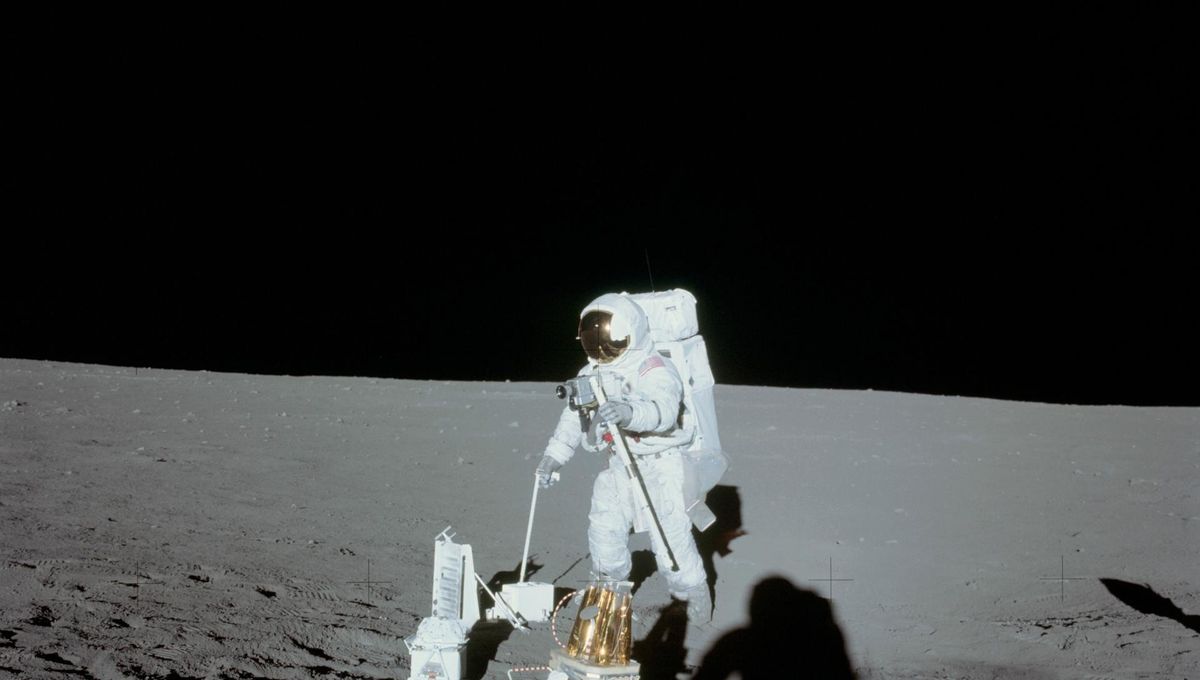
There are many challenges around the return of astronauts to the Moon. But there are also challenges when we actually get the astronauts there, and a big one comes from something small: moon dust. It has the consistency of ground fiberglass, it clings to spacesuits and crafts, and you do not want to breathe it in. Apollo astronauts used brushes to get clean, without much success. A new paper suggests another method: liquid nitrogen.
A team tested a cryogenic sprayer filled with liquid nitrogen in a vacuum, shooting a spacesuit-like material covered in a moon dust simulant. They found that the system worked to remove over 98.4 percent of the dust under vacuum conditions, without damaging the suits like methods used in the past, such as brushes and vacuuming.
“It posed a lot of problems that affected the missions as well as the astronauts once they returned home,” Ian Wells, first author of the paper from Washington State University, said in a statement.
Lunar dust can affect engines and electronics, damage suits including the seals, and gave the Apollo astronauts “lunar hay fever.” It damaged their lungs and in the long term could cause effects similar to what is experienced by coal miners: the so-called black lung disease.
“Moon dust is electrostatically charged, abrasive and gets everywhere, making it a very difficult substance to deal with,” explained Wells. “You end up with a fine layer of dust as a minimum just covering everything.”
To assess the effectiveness of the system, 26 samples were tested a total of 233 times. One of them went through 75 cleaning cycles before any damage occurred to the material. During the Apollo mission, a single brush was enough to damage the suits. And it’s not like these suits are cheap.
The tests took place both in a vacuum and under atmospheric conditions. In a vacuum, it worked much better, lifting almost 96 percent of the smallest particles of dust. We’re picturing a little moon shower pod the astronauts would enter before getting back on board the spaceship.
This work won NASA’s Breakthrough, Innovative and Game-changing (BIG) Idea Challenge last year and the team is looking into understanding the process better, as well as applying for grants to conduct tests in closer to real lunar conditions.
The study was published in Acta Astronautica.
Source Link: Liquid Nitrogen Could Be Used To Keep Astronauts Clean On The Moon